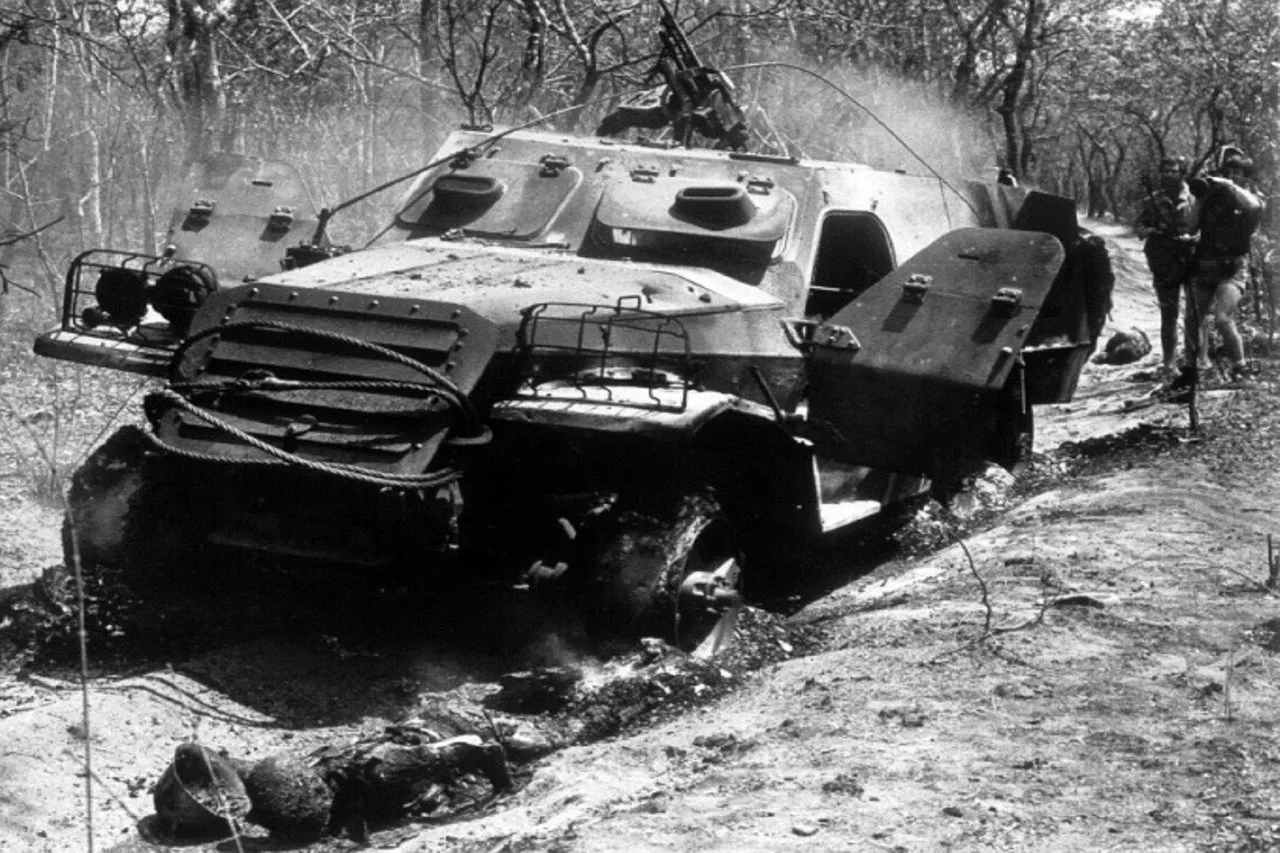Militarily a massive success... if those killed were enemy combatants... but ultimately a diplomatic nightmare.
Depending on who you ask, this phase of operation Reindeer has a number of names...
The Cassinga massacre, the battle of Cassinga or the Cassinga raid.
The SADF maintains that Cassinga was a major military camp. SWAPO and others claim it was a refugee camp.
In the end a lot of people were killed but South Africa walked away with the worst black eye and a diplomatic disaster.
The camp had been photographed via aerial reconnaissance and an attack meticulously planned as an airborne assault. It would have a massive element of surprise since the SADF had up till then never displayed such capability.
It would have to be a quick in and out since there was a Cuban base with significant armor 15 km south of Cassinga.
The attack began with carpet bombing, with cluster bombs, SWAPO's daily roll call on the parade ground, which was devastating in its effect, as most people were caught out in the open by the surprise attack.
The rest of the plan did not go so well, miscalculations had been made and many of the paratroopers were dropped way off target.
They consequently arrived late on the scene and SWAPO commanders, one of the main objectives of the assault, were able to escape, along with many others, into the surrounding bush.
A portion of the ground assault was fired upon by anti aircraft guns which significantly delayed the mopping up operation until it was the gun was taken out.
The operation was consequently 2 hours behind schedule and a large column of Cuban Armor, including T-34 tanks, was heading down the road to Cassinga, before extractions of the paratroopers had begun.
Air support was running out of fuel and could only destroy 3, BTR-152's before heading off to refuel.
Despite this and the successful ground ambush, that destroyed one tank and 4 more BTR-152's things were unraveling fast.
The apparent success of the mission now looked like turning into a disaster for the SADF troops, with the prospect of being overrun by armored forces, 150 miles (240 km) into enemy territory.
Only timely and brave air support prevented the paratroopers from being overrun and enabled a successful extraction.
Further follow up air assault eventually led to the destruction of almost the entire Cuban battalion and its vehicles. More than 150 Cubans are thought to have been killed, which was their largest one day loss suffered in Angola ever.
Wikipedia sums the attack up as follows:
According to an Angolan government white paper, the official toll of the Cassinga Raid was a total of 624 dead and 611 injured civilians as well as combatants. Among the dead were 167 women and 298 teenagers and children. Since many of the combatants were female or teenagers and many combatants did not wear uniforms, the exact number of civilians among the dead could not be established. A secret report to the SWAPO Central Committee listed 582 dead and 400 wounded.
The South Africans declared the attack on Cassinga to be a great military success, even though disaster was so closely averted by the intervention of the SAAF, and in the face of a SWAPO propaganda campaign that labelled the event a massacre. Despite inflicting heavy casualties, the SADF did not kill or capture Dimo Amaambo or any other senior SWAPO leaders. The SADF casualties were low for such an attack, an important factor in South Africa where the public was intolerant of high casualty rates: Three soldiers were killed, one was missing in action presumed dead (landed in river, failed to emerge), and eleven were wounded.
According to General Constand Viljoen, Cassinga set the strategy for the SADF for the next ten years, i.e. that of launching pre-emptive strikes at SWAPO inside Angola, even though subsequent actions would be armoured rather than air assaults.
No matter what South Africa though, this and other pictures of the days dead did not go down well with the international community and just served to isolate South Africa even more.

By South West African People's Organisation - 1978, Link
The Angolans were first to publish details of the attack, followed shortly thereafter by SWAPO press statements that supported and elaborated on the Angolan account. They described the base as a refugee camp and claimed the SADF had slaughtered 600 defenceless refugees. The bodies were buried in two mass graves at Cassinga; pictures of one of the mass graves was used extensively for propaganda purposes, and for many people therefore became the imagery that they associated with the event.
Previous posts in this series can be found at the bottom of this post:
The South African Border War - 1976, The end of a chapter and the beginning of a new phase.
The South African Border War - Mines, Mines did I say mines?
The South African Border War - Enter the Ratel
The South African Border War - The United Nations Security Council Resolutions
The South African Border War - Operation Reindeer begins.
